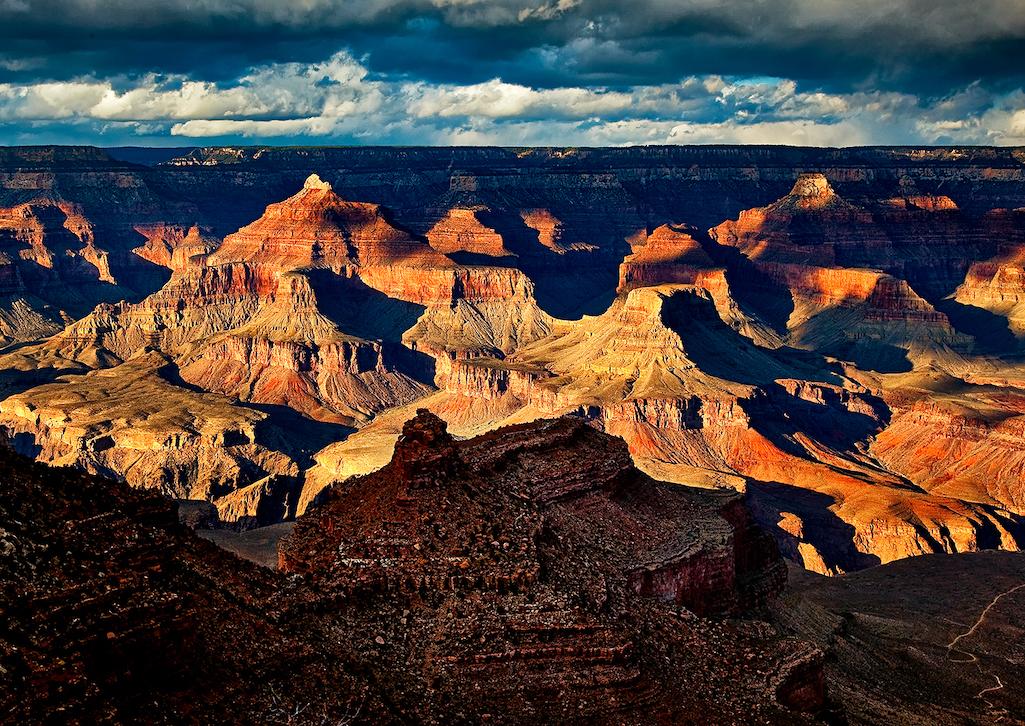
President Biden on Tuesday was expected to declare a national monument on nearly 1 million acres around Grand Canyon National Park/Rebecca Latson file
Editor's note: This updates to reflect the president's signing of the proclamation establishing the national monument.
President Biden on Tuesday designated Baaj Nwaavjo I'tah Kukveni - Ancestral Footprints of the Grand Canyon National Monument in Arizona, a sprawling, nearly million-acre tract adjacent to Grand Canyon National Park known for its natural, cultural, economic, scientific, and historic resources and recreational opportunities.
According to the Interior Department, the new national monument consists of three distinct areas to the north and south of Grand Canyon National Park, totaling approximately 917,618 acres of federal lands in northern Arizona. The lands will continue to be managed by the Bureau of Land Management and the U.S. Forest Service, a release from Interior said. The monument designation would honor valid existing rights and does not apply to private property or tribal, state or local government lands.
“Today’s action by President Biden makes clear that Native American history is American history. This land is sacred to the many Tribal Nations who have long advocated for its protection, and establishing a national monument demonstrates the importance of recognizing the original stewards of our public lands,” said Secretary of the Interior Deb Haaland. “Indigenous Knowledge is a core piece of what we mean when we talk about collaborative conservation. Today, I am honored to stand with the President, Tribal leaders, and local communities and coalitions that made it possible.”
Back in January 2012, then-Interior Secretary Ken Salazar withdrew more than 1 million acres surrounding Grand Canyon National Park from hard-rock mining. The move was described as critical to protect the canyon's watershed from potential adverse effects of additional uranium and other hardrock mining for the next 20 years. However, it also was condemned by politicians who maintain the moratorium hamstrings efforts to make the United States energy independent and costs "thousands" of jobs.
Biden's proclamation includes much of that landscape in the new monument, which U.S. Rep. Paul Gosar, R-Arizona, has described as a land grab.
"We’ve said time again that uranium mining has no place near this national park landscape and its waters that millions of people rely on for survival," said Theresa Pierno, president and CEO of the National Parks Conservation Association. "Many have fought to protect this place, and we are proud to have stood alongside them. We commend the Biden administration for listening to those voices and taking action to protect this watershed now and forever. Today, we celebrate the designation of the Baaj Nwaavjo I'tah Kukveni - Ancestral Footprints of the Grand Canyon National Monument with all who cherish this special place."
The plateaus, canyons and tributaries surrounding the Grand Canyon comprising the national monument support a diversity of wildlife and plants, including bison, mule deer, elk desert bighorn sheep, and rare or endemic species of cactus. Biden's proclamation under The Antiquities Act allows hiking, hunting, and camping on the monument, according to Interior.
Additionally, the proclamation "does not preclude the construction and maintenance of utility, pipeline and telecommunications facilities, roads or highway corridors, or water infrastructure, including wildlife water developments and water district facilities, that occur consistent with proper care and management of monument objects," the release said.
The national monument’s name reflects the deep interconnection between the land and its Tribal Nations. The Havasupai call the land baaj nwaavjo, or “where Indigenous peoples roam.” To the Hopi, it is i'tah kukveni or “our ancestral footprints.”
Interior officials said that "to ensure that management decisions are informed by Indigenous Knowledge and tribal expertise, the presidential proclamation calls for the Interior and Agriculture Secretaries to explore opportunities for Tribal Nations to participate in co-stewardship of the monument, as well as establishes a Tribal Commission. In addition, the proclamation calls for the Secretaries to establish a monument advisory committee that includes representatives from the Arizona Game and Fish Department; state and local governments; Tribal Nations; recreational users; conservation organizations; wildlife, hunting, and fishing organizations; the scientific community; the ranching community; business owners; and the general public in the region."



Add comment